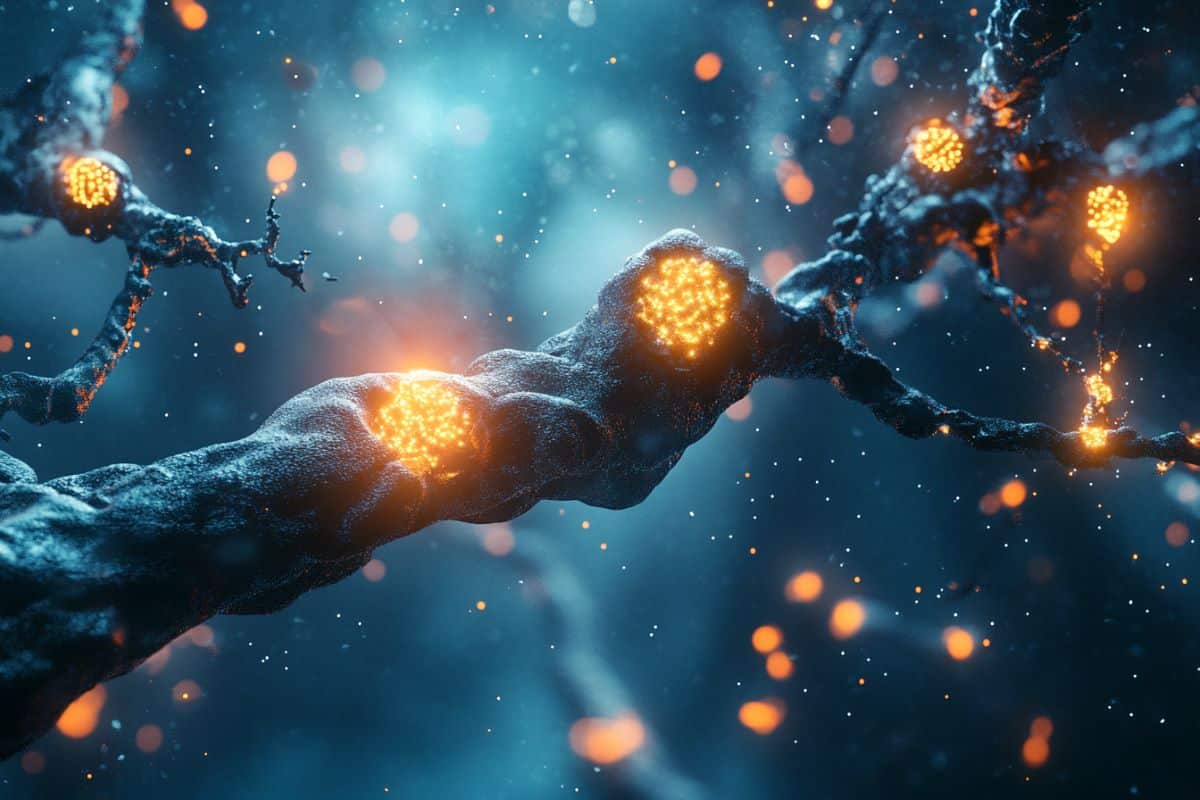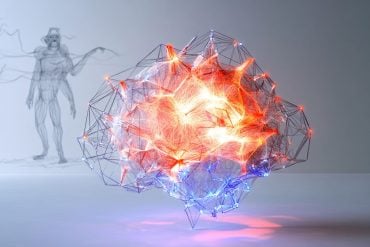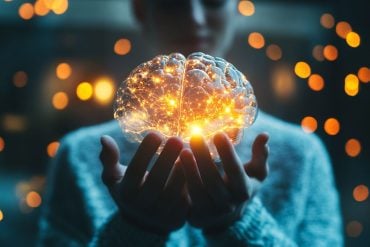Summary: Researchers have identified a unique mitochondrial process in CA2 neurons that supports learning, memory, and social recognition. Mitochondria in different parts of these neurons vary in structure and function, with those at the outermost synapses relying on the mitochondrial calcium uniporter (MCU) for plasticity.
Deleting the MCU gene disrupted this plasticity, highlighting its crucial role in maintaining neural connectivity. Since mitochondrial dysfunction is linked to Alzheimer’s, autism, and other neurological disorders, this discovery could help explain why certain brain circuits are vulnerable to disease.
The study also challenges the assumption that mitochondria function uniformly within neurons, suggesting they adapt based on location. Understanding these mechanisms could lead to new therapies that protect or restore brain function.
Key Facts
- Mitochondrial Specialization: CA2 neurons have distinct mitochondrial properties at different synapses, with the outermost requiring MCU for plasticity.
- Link to Neurodegeneration: Dysfunction in these mitochondria may explain why CA2 circuits are early targets in Alzheimer’s disease.
- Therapeutic Potential: Understanding how mitochondria support neural plasticity could lead to treatments for neurological disorders like autism and Alzheimer’s.
Source: Virginia Tech
Virginia Tech neuroscientists have uncovered a mitochondrial process that supports the brain cells critical for learning, memory, and social recognition.
Led by Shannon Farris, assistant professor at the Fralin Biomedical Research Institute at VTC, the research in mouse models examines the hippocampal CA2 region, a specialized area in the brain’s memory center essential for social recognition memory.

Published this week in Scientific Reports, the study reveals the critical role of the mitochondrial calcium uniporter (MCU), a protein that regulates calcium flow into mitochondria, in enabling neurons to strengthen connections. This process, known as synaptic plasticity, is fundamental to cognitive function and adaptive learning.
“Our findings highlight a distinct mitochondrial mechanism that helps explain how CA2 neurons function, which may contribute to its role in social cognition and its vulnerability in certain neurological disorders,” Farris said.
A unique role for the CA2 region in social memory
The hippocampal CA2 region is a small but critical hub for social recognition — the ability to remember and distinguish individuals. Unlike neighboring hippocampal regions, CA2 neurons resist certain forms of synaptic plasticity, raising intriguing questions about their specialized function.
Farris and her team discovered that mitochondria in CA2 neurons are not uniform. Instead, their structure and function vary depending on their location within the neuron. Mitochondria in the farthest reaches of the dendrites of neurons — at the outermost synaptic input connections — are highly specialized and depend heavily on MCU to control their activity.
To explore this, the researchers deleted the MCU gene in CA2 neurons of genetically engineered mice. This caused a disruption in plasticity at the outermost synapses, while those closer to the cell body were unaffected.
“This suggests that mitochondrial diversity isn’t just a biological quirk,” said Farris. “It’s a fundamental feature that allows different parts of the same neuron to function in distinct ways.”
Potential implications for Alzheimer’s, autism spectrum disorder
Mitochondrial dysfunction is increasingly recognized as a major contributor to neurological disorders such as Alzheimer’s disease, autism, schizophrenia, and depression.
Synapses need a lot of energy to stay connected and process information. When mitochondria don’t work properly, it can disrupt the functional capacity of these cell-cell communications channels , leading to problems with thinking and memory.
It is known that the most distal outermost synapses are among the first synaptic connections affected in Alzheimer’s disease. The findings suggest that MCU’s function in CA2 neurons may contribute to this initial weakness, offering potential insight into why this circuit is particularly susceptible to neurodegeneration.
“Understanding why mitochondria in CA2 neurons are different — and how they fail — could help us design therapies to protect or restore function in specific brain regions,” Farris said.
Beyond Alzheimer’s, the study raises broader questions about how mitochondrial diversity might influence other neurological disorders. The ability of neurons to fine-tune mitochondrial properties could be a critical factor in understanding autism, where CA2 dysfunction could be linked to the known social deficits that occur in this spectrum.
Decoding mitochondrial function in neural circuits
This study advances understanding of mitochondrial biology and overcomes a technical hurdle in assessing mitochondria in dense and diverse brain tissues, the researchers said.
Using electron microscopy and artificial intelligence to unbiasedly identify only the dendritic mitochondria within the densely packed synaptic layer, Farris’s team mapped mitochondrial structure in CA2 neuron dendrites at high spatial resolution with extreme precision over millimeterexpanses of tissue.
The analysis revealed that MCU-deficient mitochondria were smaller and more fragmented, a structural shift that may underlie their impaired ability to support synaptic function.
More broadly, the study challenges the long-held assumption that mitochondria work the same way throughout all parts of the neuron. Instead, neurons may actively modify mitochondrial properties to optimize function at specific synapses, a concept that could reshape our understanding of neural energy regulation and plasticity.
“These findings challenge the long-held assumption that mitochondria function uniformly within dendrites,” said Katy Pannoni, a senior research associate in Farris’s lab and the study’s first author.
“Instead, our work suggests that mitochondria are highly specialized to support the distinct needs of different neural circuits.”
By applying artificial intelligence to analyze large-scale electron microscopy datasets, the research team quantified mitochondrial structure and distribution across circuits at a scale unattainable by conventional manual methods. This new approach will allow future studies to investigate mitochondrial function with greater precision and depth of analysis.
The future of mitochondrial research
This discovery opens new pathways to consider for potential therapies, particularly for neurological disorders where energy deficits weaken brain connections. By revealing how mitochondria support neural plasticity, Farris’s research lays the groundwork for strategies to preserve brain function and slow neurodegeneration.
Next, her team will investigate how mitochondria in CA2 neurons develop their specialized properties and whether similar adaptations exist in other brain regions. They also aim to explore therapeutic strategies that could bolster mitochondrial health and protect neurons from disease.
“The more we understand mitochondrial diversity, the closer we get to unlocking how the brain learns, remembers, and adapts—and how we can keep it healthy,” Farris said.
Farris is also an assistant professor in Virginia Tech’s Department of Biomedical Sciences and Pathobiology at the Virginia-Maryland College of Veterinary Medicine and the Virginia Tech Carilion School of Medicine Department of Internal Medicine.
All team members are part of the Fralin Biomedical Research Institute’s Center for Neurobiology Research.
About this neuroscience and memory research news
Author: John Pastor
Source: Virginia Tech
Contact: John Pastor – Virginia Tech
Image: The image is credited to Neuroscience News
Original Research: Open access.
“MCU expression in hippocampal CA2 neurons modulates dendritic mitochondrial morphology and synaptic plasticity” by Shannon Farris et al. Scientific Reports
Abstract
MCU expression in hippocampal CA2 neurons modulates dendritic mitochondrial morphology and synaptic plasticity
Neuronal mitochondria are diverse across cell types and subcellular compartments in order to meet unique energy demands.
While mitochondria are essential for synaptic transmission and synaptic plasticity, the mechanisms regulating mitochondria to support normal synapse function are incompletely understood.
The mitochondrial calcium uniporter (MCU) is proposed to couple neuronal activity to mitochondrial ATP production, which would allow neurons to rapidly adapt to changing energy demands.
MCU is uniquely enriched in hippocampal CA2 distal dendrites compared to proximal dendrites, however, the functional significance of this layer-specific enrichment is not clear.
Synapses onto CA2 distal dendrites readily express plasticity, unlike the plasticity-resistant synapses onto CA2 proximal dendrites, but the mechanisms underlying these different plasticity profiles are unknown.
Using a CA2-specific MCU knockout (cKO) mouse, we found that MCU deletion impairs plasticity at distal dendrite synapses.
However, mitochondria were more fragmented and spine head area was diminished throughout the dendritic layers of MCU cKO mice versus control mice.
Fragmented mitochondria might have functional changes, such as altered ATP production, that could explain the structural and functional deficits at cKO synapses.
Differences in MCU expression across cell types and circuits might be a general mechanism to tune mitochondrial function to meet distinct synaptic demands.






